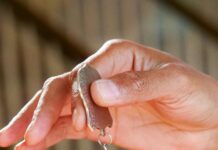In the ever-evolving world of domain auctions, spotting fake listings can be the difference between scoring a lucrative investment and falling victim to a scam. As the digital landscape expands, so do the tactics of unscrupulous sellers who prey on unsuspecting buyers. So, how can you protect yourself from these hidden risks? In this guide, we will explore how to spot fake domain auction listings and arm you with the essential knowledge to navigate this tricky terrain.
You might be asking yourself, “What are the red flags to look for?” or “How do I differentiate between a genuine listing and a deceptive one?” These questions are crucial, as understanding the nuances of domain auctions can save you time, money, and a whole lot of frustration. In today’s fast-paced online marketplace, it’s vital to maintain a keen eye for detail. From analyzing the seller’s credibility to examining the auction site’s reputation, we’ll uncover the hidden signs of fraudulent listings.
Don’t let the allure of premium domains cloud your judgment! With our expert tips, you’ll learn how to conduct thorough research and identify suspicious behavior that can lead to costly mistakes. Whether you’re a seasoned investor or a newcomer eager to dive into the domain auction scene, this article equips you with the tools needed to navigate potential pitfalls. Read on to discover the secrets of spotting fake listings and safeguarding your investments in the digital realm!
7 Red Flags to Identify Fraudulent Domain Auction Listings: Protect Your Investment Today!
In today’s digital landscape, investing in domain names has become a popular way to secure a piece of the online real estate. Domain auctions promise great opportunities. But, with the rise of online transactions, there also comes the ugly side of fraud. Knowing how to spot fake domain auction listings is crucial for protecting your investments. Here are 7 red flags that can help you identify fraudulent listings and avoid falling victim to scams.
1. Unbelievable Prices
If a domain name is listed at a price that seems too good to be true, it probably is. Scammers often lure buyers with rock-bottom prices, hoping to entice them into a hasty purchase. For example, a premium domain that usually sells for thousands of dollars may be listed for a mere hundred. Be skeptical of any listing that deviates significantly from market value.
2. Lack of Contact Information
Authentic domain auctions typically provide clear and accessible contact information. If a listing has no way to reach the seller or auctioneer, consider it a major red flag. Legitimate sellers should be willing to answer any questions and provide additional information about the domain. If you can’t contact them, you might be dealing with a fraudster.
3. Poor Grammar and Spelling Mistakes
Fraudulent listings often have numerous grammatical errors and spelling mistakes. This can be a sign that the seller is not serious or is trying to pull a fast one. A professional auction site or seller should maintain a certain level of quality in their listings. So, if you see a listing with sloppy writing, it might be worth your time to look elsewhere.
4. No Verification of Domain Ownership
Always verify that the seller actually owns the domain they are selling. You can do this by checking the WHOIS database. If the ownership details are hidden or if the domain owner is not the one selling it, that’s a big red flag. Legitimate sellers should have no issue providing proof of ownership.
5. Pressure to Act Quickly
Fraudsters often create a false sense of urgency, pressuring you to make quick decisions. If a seller insists that you need to act fast to secure a great deal, be cautious. Real opportunities are usually not rushed. Take your time to research and verify before making any commitments.
6. Unusual Payment Methods
When it comes to payments, using secure and well-known methods is essential. If a listing asks for payment via untraceable methods like wire transfers, cryptocurrency, or gift cards, that’s a sign you might be getting scammed. Stick to reputable payment options that offer buyer protection.
7. Inconsistent Domain Information
Every domain has a history. If the listing provides conflicting details about the domain, like its age or previous ownership, it’s a cause for concern. Use domain appraisal tools to check the domain’s history. If things don’t add up, it’s best to walk away.
How to Protect Yourself
Here are some practical steps you can take to safeguard your investments:
- Research the Market: Familiarize yourself with the typical prices of domains similar to the one you’re interested in.
- Use Reputable Platforms: Stick to well-known auction sites with good reviews and ratings.
- Ask Questions: Don’t hesitate to ask the seller for more information about the domain and their selling process.
- Check Reviews: Look for reviews of the seller or auction site to see if others have had positive or negative experiences.
- Consult Experts: If you’re unsure, consider seeking advice from domain investment professionals who can guide you through the process.
What to Do If You Suspect Fraud
If you believe you’ve encountered a fraudulent auction listing, report it immediately. Most auction platforms have procedures for reporting suspicious activity. Additionally, you can file a complaint with the Federal Trade Commission (FTC) or your local consumer protection agency.
Remember, the online domain marketplace can be a minefield filled with hidden risks. But by keeping an eye out for these red flags, you can better protect your investment. Due diligence is the key to navigating this complex landscape safely.
By being vigilant and informed, you can enjoy the benefits of domain investing while minimizing the risks involved. Stay smart, stay safe, and happy bidding!
The Ultimate Guide: How to Validate Domain Auction Listings and Avoid Costly Mistakes
Navigating the world of domain auctions can be both exciting and nerve-wracking, especially if your looking to invest in a digital asset. With the rise of online auctions, there’s a growing number of listings that promises high returns. But, how do you make sure your not falling for scams or fake listings? This guide aims to equip you with the knowledge necessary to validate domain auction listings and avoid costly mistakes.
Understand the Risks Involved
When you venture into domain auctions, you must be aware of the potential risks. Fake domain listings can lead to substantial financial losses. Here’s a quick look at some common risks:
- Misleading Information: Listings that exaggerate the value of a domain.
- No Ownership Proof: Sellers who can’t prove they own the domain.
- Hidden Fees: Auctions with unexpected costs that can inflate the overall price.
- Bid Shills: Individuals who inflate the auction price by placing fake bids.
Research the Domain’s History
Before you make a bid, investigating the domain’s history is essential. Here are some steps to follow:
- Check Domain Age: Older domains often have more value. Use tools like WHOIS to find out when the domain was registered.
- Review Past Sales: Sites like NameBio provides historical sales data. This could help you gauge what similar domains have sold for.
- Analyze Traffic Data: If possible, use tools to check if the domain has any existing traffic. Domains with traffic can be more valuable.
- Look for SEO Metrics: Domains that rank well in search engines can bring added value. Tools like Moz or Ahrefs can provide insights.
Spotting Fake Listings
Not all domain auction listings are created equal. Here’s how you can spot the red flags:
- Too Good to be True: If the price seems unrealistically low compared to market value, it probably is.
- Lack of Contact Information: Authentic sellers usually provide reliable contact info. If there’s none, be cautious.
- Unusual Payment Methods: If a seller wants payment through unconventional methods, it could be a scam.
- Inconsistent Information: Cross-check the details in the listing against other platforms. Inconsistencies are often a bad sign.
How to Validate Domain Auction Listings
Verifying the legitimacy of a domain auction listing is crucial. Here’s a checklist to help you:
- WHOIS Lookup: Verify the domain’s ownership through WHOIS. If the information is private or missing, ask questions.
- Auction Platform Reputation: Use well-known platforms like GoDaddy Auctions or Flippa. Their reputation can provide some assurance.
- Community Feedback: Check forums or social media groups for feedback about the seller or the domain. Real-life experiences can shed light on potential issues.
- Compare Listings: Look at similar domains in the same niche. If the listing you’re eyeing is extraordinarily different, question it.
Essential Tips for Successful Auction Participation
Being prepared can make all the difference. Here are some practical tips:
- Set a Budget: Decide beforehand the maximum amount you’re willing to spend. Sticking to it can prevent impulse buys.
- Participate in Live Auctions: If possible, taking part in live auctions can give you a better sense of the bidding environment.
- Don’t Rush: Take your time to evaluate each listing thoroughly. Quick decisions often lead to mistakes.
- Stay Informed: Keep updated on industry trends. Knowing what’s valuable can help you make informed decisions.
Conclusion
Entering the domain auction arena can be an exhilarating journey when done right. By validating listings and being aware of the potential pitfalls, you can navigate this space more confidently. Remember to do your homework, trust your instincts, and always verify the details. Domain auctions can lead to fruitful investments, but only if you approach them with caution and knowledge. Happy bidding!
Unlocking the Secrets: 5 Proven Techniques to Detect Fake Domain Auctions in Minutes
Navigating the world of domain auctions can be a tricky business, especially when it comes to identifying fake listings. With the rise of online marketplaces, the risk of falling into traps set by scammers has increased significantly. In New York, where the technology and digital economy is booming, it’s crucial for buyers to be able to spot these fraudulent listings quickly. So, how exactly can you protect yourself? Here’s a rundown of five proven techniques to detect fake domain auctions in minutes.
1. Verify the Seller’s Reputation
One of the first things you should do is check the seller’s reputation. Reputable platforms like GoDaddy, Namecheap or Sedo often have a feedback system. Here’s what you can look for:
- User Reviews: Check how past buyers rated their experience.
- Response Time: Genuine sellers usually respond quickly to inquiries.
- History of Listings: A consistent history of successful sales is a good sign.
If a seller has no reviews or a lot of negative feedback, it’s a red flag.
2. Analyze the Domain Name
Not all domain names are created equal, and some are more likely to be associated with scams. Here’s how to analyze them:
- Domain Age: Use tools like WHOIS to see when the domain was registered. New domains might be a sign of a scam.
- Spelling and Grammar: Scammers often use misspelled or awkwardly phrased domain names.
- Extension Matters: Be cautious with unusual extensions. Common ones like .com, .org, and .net are generally safer.
3. Check the Auction Format
Different platforms have different auction formats. Familiarize yourself with the common practices. Here’s a basic comparison:
| Auction Type | Description | Risk Level |
|---|---|---|
| Reserve Auctions | Seller sets a minimum price. | Moderate |
| No Reserve Auctions | Domains sell to the highest bidder. | High |
| Buy Now Auctions | Fixed price set by seller. | Low |
| Sealed Bids | Bidders submit private bids. | Moderate to High |
Understanding these formats can help you gauge the legitimacy of a listing.
4. Research Comparable Sales
Understanding the market value of domain names is critical. If a domain is listed at a price that seems too good to be true, it probably is. Here’s how to research:
- Marketplaces: Sites like Flippa or DNJournal showcase previous sales.
- Domain Appraisal Tools: Use tools like Estibot to get an estimate of a domain’s worth.
- Trends: Keep an eye on trends in domain name sales to see if there’s a spike in certain extensions or keywords.
5. Trust Your Instincts
Sometimes, your gut feeling might be your best ally. If something feels off, it probably is. Here are some signs to watch for:
- Pressure Tactics: If a seller rushes you to make a decision, it’s often a scam.
- Too Good to Be True: If a domain is listed at a fraction of its market value, question it.
- Lack of Transparency: Be wary if the seller is reluctant to provide information or details about the domain.
The Importance of Due Diligence
When participating in domain auctions, doing your homework is essential. The risks associated with fake listings can lead to financial loss or legal issues. Here’s a quick checklist to help you stay vigilant:
- Always verify seller information and their auction history.
- Analyze domain names for age, spelling, and type.
- Compare with similar domain sales.
- Trust your instincts, and don’t rush into a purchase.
In summary, the domain auction scene can be both exciting and perilous. By using these five techniques, you can minimize your risk and make more informed decisions. The key is to remain vigilant, do your research, and trust your gut. With these strategies in your toolkit, you’ll be better prepared to spot fake domain auction listings and avoid the hidden risks that come with them. Remember, the world of domain names is vast, and knowledge is your best ally in navigating it safely.
Are You Falling for Scams? Essential Questions to Ask Before Bidding on Domain Auctions
In the fast-paced world of domain auctions, it’s easy to get caught up in the excitement. But, are you falling for scams? That’s the question every potential bidder should be asking before jumping in. With so many offers and listings available, it’s crucial to know how to spot fake domain auction listings. In this article, we’ll explore essential questions to ask, uncover hidden risks, and share tips on how to avoid falling victim to scams in domain auctions.
Understand the Domain Auction Landscape
Domain auctions have been around since the early days of the internet. They allow individuals and businesses to buy and sell domain names, sometimes for significant amounts of money. However, this also opens the door for scammers who take advantage of unsuspecting bidders. If you’re new to this, here’s what you should know:
- Types of Domain Auctions:
- Public Auctions: Open to anyone, these are often hosted on large platforms.
- Private Auctions: Invited participants only, these can be riskier if you don’t know the seller.
- Expired Domain Auctions: Domains that are no longer owned. Potential for great deals, but also risks.
Essential Questions to Ask Before Bidding
Before you place a bid, consider asking yourself these key questions:
- Is the seller reputable? Look for reviews or feedback from previous buyers.
- What’s the domain’s history? Use tools like WHOIS to check ownership and history.
- Are there any hidden fees? Some platforms have extra charges that aren’t immediately clear.
- Can I verify the listing? Check for similar domains or listings and see if they match.
- What’s the domain’s traffic history? Tools like SEMrush can show if the domain had visitors or backlinks.
How to Spot Fake Domain Auction Listings
Fake listings can be hard to detect, but there are warning signs to look for. Here’s some tips that might just save you money:
- Check the URL: Scammers often create look-alike websites. Make sure the website is legitimate.
- Too Good to Be True? If a domain is being offered for a price that seems unrealistically low compared to market value, it probably is.
- Missing Contact Information: Legitimate sellers provide ways to contact them. If there’s no contact info, be cautious.
- Unusual Payment Methods: If they ask for payment via wire transfer or cryptocurrency without any safeguards, run!
Uncover Hidden Risks
There’re inherent risks when participating in domain auctions. Some of them include:
- Legal Issues: You might end up bidding on a domain that has trademark or copyright issues.
- Buyer’s Remorse: Sometimes bidders get swept up and realize later they overpaid.
- Phishing Attempts: Scammers might send emails pretending to be the auction platform to gather your personal info.
Practical Examples and Red Flags to Consider
Here’s a list of things to watch out for with examples:
- Example: A domain listed for $10,000, but it has no real web traffic history or backlinks.
- Red Flags:
- Poor grammar or spelling in the listing.
- Generic domain names that don’t seem to have any prior use.
- Sellers who pressure you to bid quickly.
Comparing Legitimate Auctions vs. Scams
Knowing the difference can prevent you from losing money. Here’s a quick comparison:
Legitimate Auctions:
- Established platforms with clear terms.
- Verified listings with seller information.
- Ability to communicate with the seller.
Scam Auctions:
- New or unknown platforms with vague terms.
- Listings that seem rushed or poorly written.
- Lack of seller communication options.
Final Thoughts
Navigating domain auctions can be thrilling, but it’s essential to keep your guard up. By asking the right questions and knowing how to spot fake domain auction listings, you can protect yourself from falling for scams. Always do plenty of research and trust your instincts. If something feels off, it probably is. Remember, the right domain is out there, but only if you’re willing to take the time to find it safely. Happy bidding!
Navigating the Risks: How to Safeguard Yourself from Fake Domain Auctions in 2023
Navigating the digital landscape of domain auctions can be a tricky endeavor, especially in 2023. With the online marketplace growing, so does the threat of fake domain auction listings. As a potential buyer, it’s crucial to know how to spot these fraudulent listings to protect both your finances and your online presence. In this article, we’ll explore the hidden risks associated with fake domain auctions and provide practical tips for identifying them.
Understanding the Landscape of Domain Auctions
Domain auctions have become a popular way for individuals and businesses to acquire valuable domain names. However, as with any online marketplace, there are bad actors looking to exploit unsuspecting buyers. Fake domain auctions can lead to financial loss and even legal troubles.
Key Facts about Fake Domain Auctions
- The rise of online businesses has increased the demand for domain names, making them valuable assets.
- Scammers often create fake listings that appear legitimate to lure in potential buyers.
- Victims of fake auctions may end up with unusable or non-existent domains.
How to Spot Fake Domain Auction Listings
Identifying fake domain auction listings requires a keen eye and some detective work. Here’s some indicators to keep in mind:
- Check the Domain History: Use tools like Wayback Machine to see the domain’s previous usage. If the domain has a suspicious history, it might be a red flag.
- Look for Contact Information: Legitimate sellers provide clear contact details. If the listing lacks this information or it seems off, be cautious.
- Verify the Auction Platform: Stick to well-known auction sites. If you encounter an obscure platform, do your research. Look for reviews and user feedback.
- Analyze the Pricing: If the price seems too good to be true, it probably is. Compare the listing with similar domain names on reputable websites.
- Read the Fine Print: Scammers often use complex terms that are hard to understand. If the auction listing is vague or uses jargon excessively, take a step back.
- Use WHOIS Lookup: This tool reveals the registrant’s identity and contact info. If it shows a private registration or a suspicious name, it could be fake.
- Trust Your Instincts: If something feels off, it’s better to err on the side of caution.
Common Red Flags in Fake Listings
When you’re browsing through domain auctions, keep an eye out for these specific red flags:
- Unrealistic Promises: Listings that guarantee high traffic or profitability without any evidence should raise concerns.
- Pressure Tactics: If the seller pushes for a quick purchase, it’s usually a sign to walk away.
- Incomplete Information: Listings that lack essential details about the domain can be a trap.
Tools and Resources for Verification
To safeguard yourself from fake auction listings, you can utilize several online tools and resources:
- Domain History Checkers: Websites like DomainTools or NameBio offer insights into domain sales history.
- WHOIS Lookup Services: Websites like ICANN WHOIS or WHOIS.net let you check domain ownership.
- Reputation and Review Sites: Platforms like Trustpilot or SiteJabber can help you assess the auction site’s credibility.
Taking Action If You Encounter a Fake Listing
If you suspect that you’ve come across a fake domain auction, take immediate action:
- Report the Listing: Notify the auction platform about the suspicious listing. They can take necessary actions to remove it.
- Avoid Payment: If you’ve not already paid, do not send any money to the seller.
- Alert Others: Share your experience on forums or social media to warn potential buyers.
The Financial Risks Involved
Investing in a domain name can be lucrative, but fake listings can lead to significant financial losses. Consider these potential costs:
- Loss of Investment: Paying for a nonexistent domain can result in a total loss of funds.
- Legal Fees: If you end up in a dispute over a fake domain, you may incur legal costs.
- Opportunity Cost: Money spent on fake auctions could have been invested in legitimate domains.
Final Thoughts
Navigating the risks associated with domain auctions in 2023 is essential for anyone looking to invest in online properties. By understanding how to spot fake domain auction listings and employing the right tools and strategies, you can protect yourself from potential scams. Always remember to do your due diligence, and trust your instincts when something feels off. With careful research and awareness, you can successfully navigate the domain auction landscape and make informed decisions.
Conclusion
In conclusion, spotting fake domain auction listings is essential for anyone looking to make a legitimate investment in online real estate. By paying close attention to key indicators such as the credibility of the auction platform, the presence of detailed domain information, and verifying the seller’s identity, you can significantly reduce the risk of falling for scams. Additionally, leveraging domain valuation tools and researching the domain’s history can provide valuable insights that help you make informed decisions. Always remain skeptical of listings that offer deals that seem too good to be true, as these are often red flags. As a final thought, equip yourself with knowledge and vigilance as you navigate the domain auction landscape. Consider sharing this information with fellow investors to foster a safer online marketplace, and remember to always do your due diligence before making any purchases.












